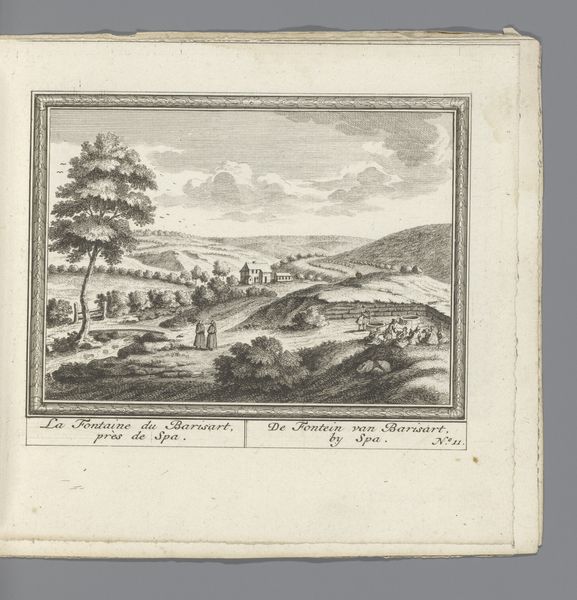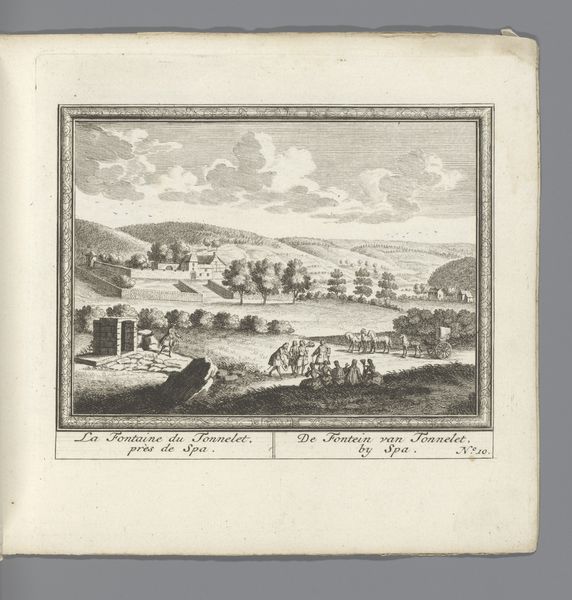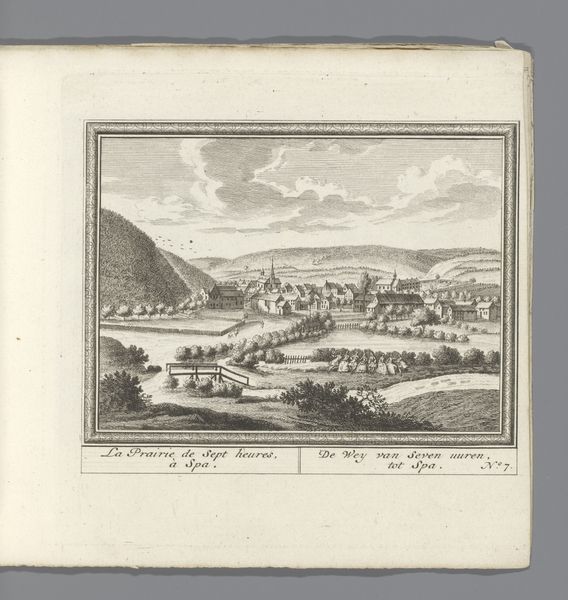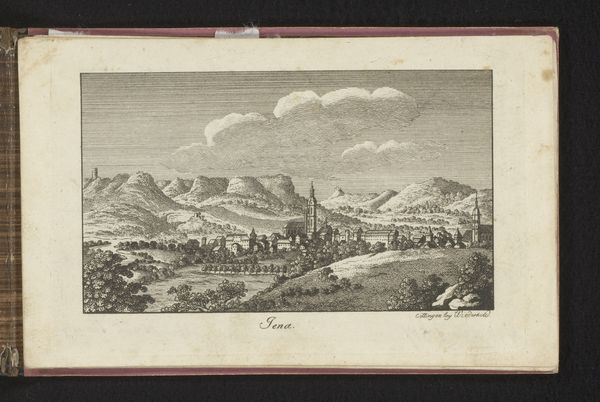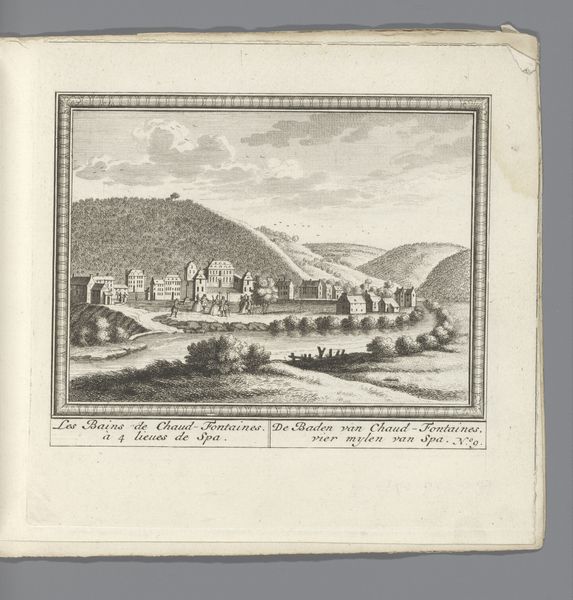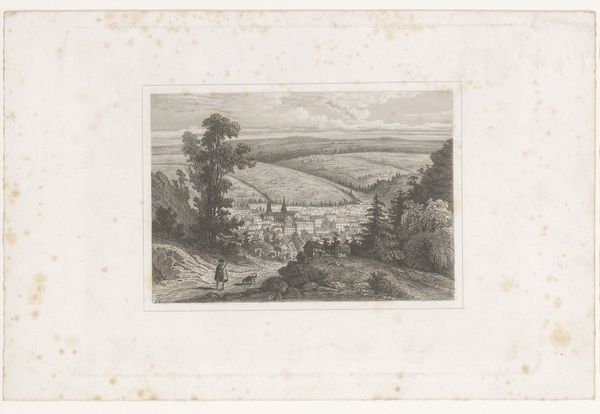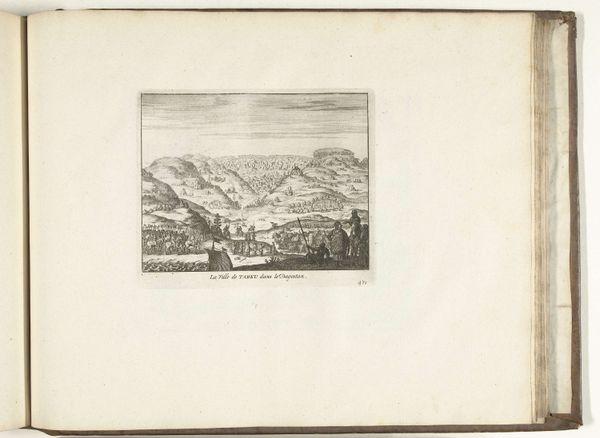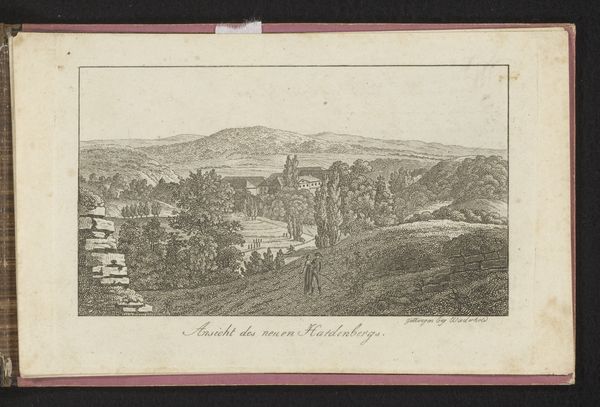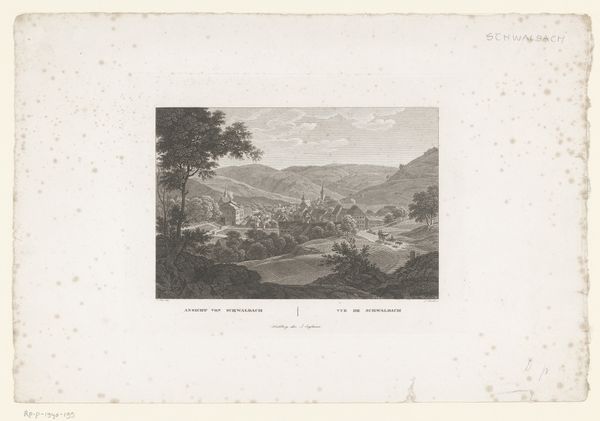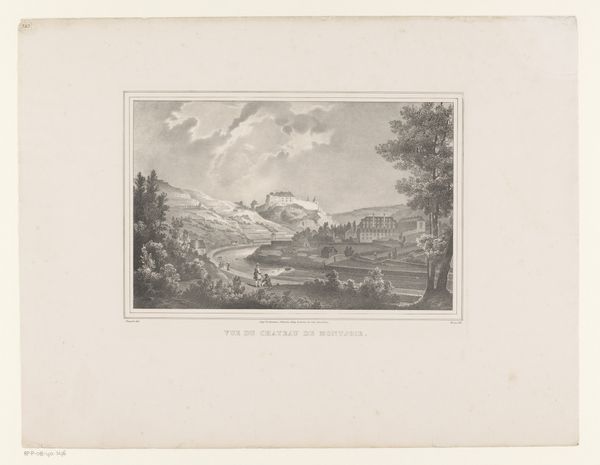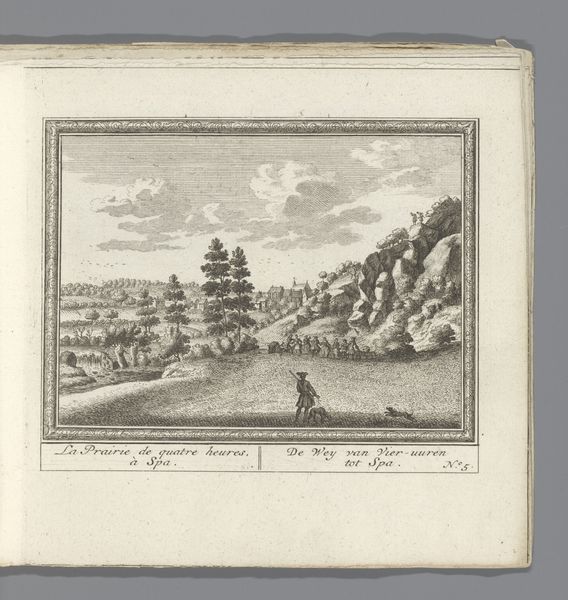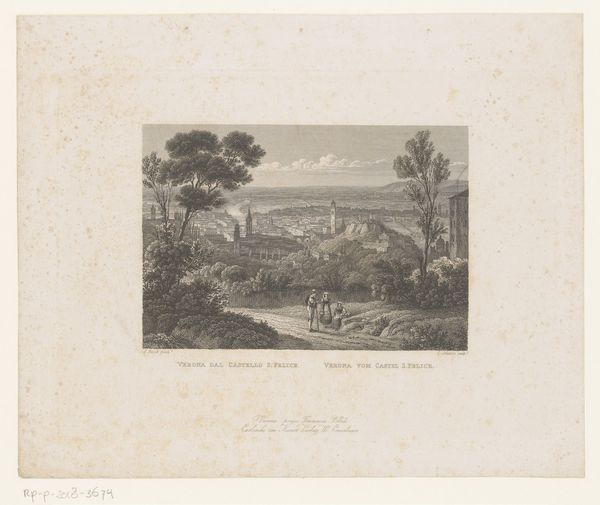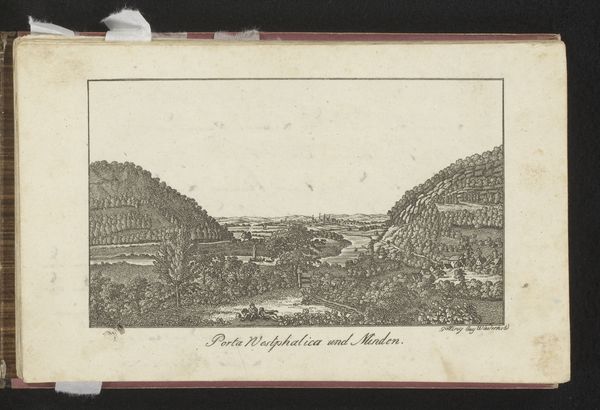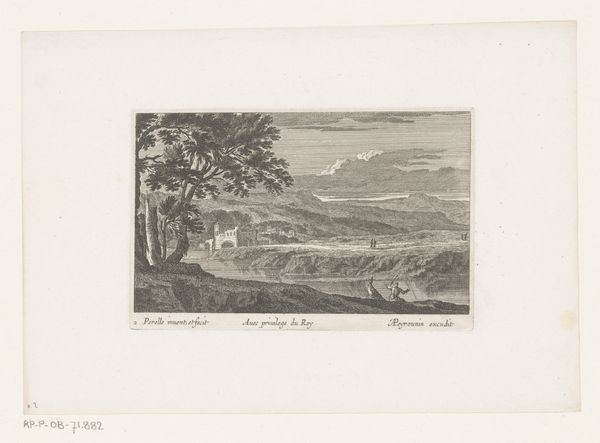
print, etching, paper, engraving
#
aged paper
#
homemade paper
#
paper non-digital material
#
baroque
# print
#
etching
#
sketch book
#
landscape
#
paper
#
personal sketchbook
#
sketchbook drawing
#
cityscape
#
storyboard and sketchbook work
#
paper medium
#
sketchbook art
#
design on paper
#
engraving
Dimensions: height 172 mm, width 198 mm
Copyright: Rijks Museum: Open Domain
Curator: This is an etching from 1734 called "Gezicht op Spa," created by an anonymous artist. It's currently held in the collection of the Rijksmuseum. Editor: My initial reaction is the detail! It looks so meticulous and miniature, yet the scale it represents feels vast. What medium did the artist use to bring this to life? Curator: The artist employed etching and engraving on paper, two processes that demand a high degree of technical skill and control. It involved coating a metal plate with wax, drawing through the wax to expose the metal, and then using acid to bite into the exposed lines. The plate is then inked, and the print is made by pressing the paper onto the plate. I wonder, could they be using paper handmade in Spa itself? Editor: Fascinating. You know, viewing this through a contemporary lens, it's striking to see how "Spa," the town itself, became a commodity—a visual product offered to a burgeoning tourist market. Consider the labor involved—the hands that harvested materials, processed paper, meticulously etched the metal plate, and ran the presses. This reveals an extensive economic and labor network that goes beyond the mere aesthetic of the cityscape. How do you see the interplay of leisure and labor here? Curator: I agree, and the act of producing such a detailed cityscape suggests a deep understanding of material processes, as well as consumer culture and commercial interests. This print, therefore, transcends mere aesthetic beauty, acting as a cultural artifact. But look, this perspective seems to come from some member of the elite touring, who consume the area through landscape view? Editor: Perhaps the print functions as a sort of souvenir, and therefore represents the start of mass tourism we understand today, catering to privilege while relying on local exploitation. Its small size implies that it was designed to travel. The picturesque image flattens the complexities of local life and landscapes into easily digestible commodities for outside consumption, wouldn't you agree? Curator: A valid reading, one that I appreciate. Ultimately, by investigating its materiality and context, the etching can encourage us to confront the ethical implications inherent within representing landscape and society—linking the past to present considerations about labour, consumption, and even representation of our environment. Editor: Precisely. The art becomes a conduit to contemplate broader themes, enriching the historical and contemporary dialogue. Thank you.
Comments
No comments
Be the first to comment and join the conversation on the ultimate creative platform.
